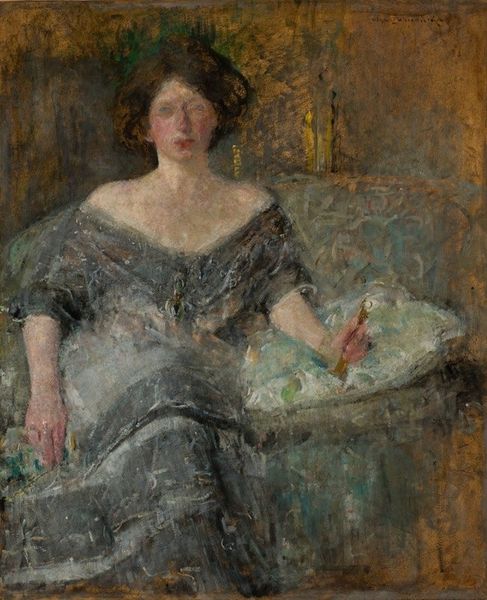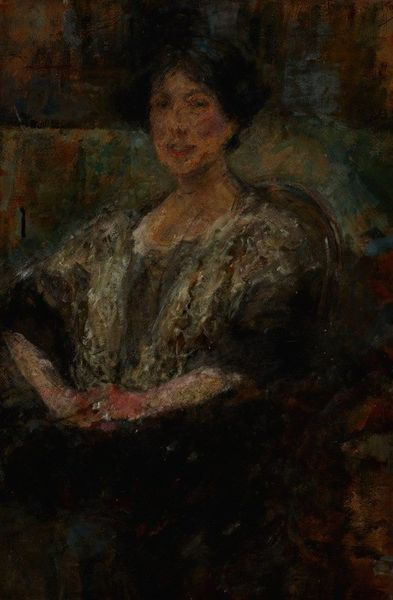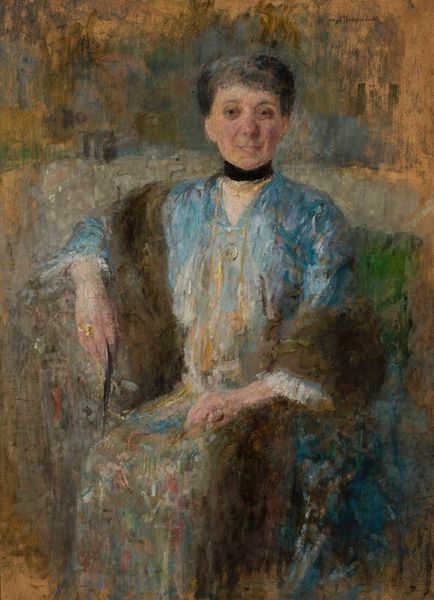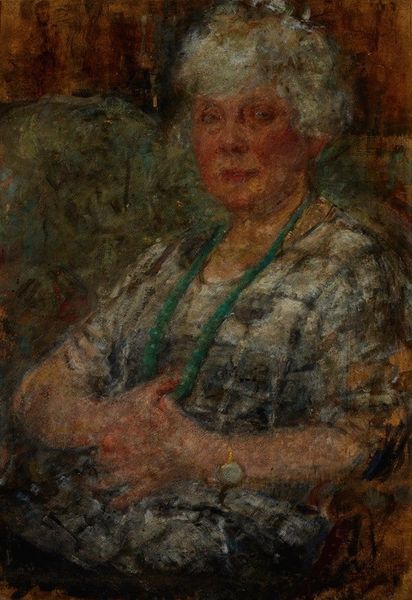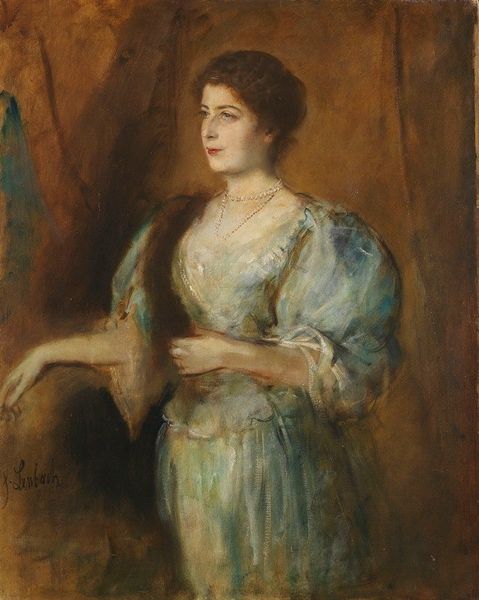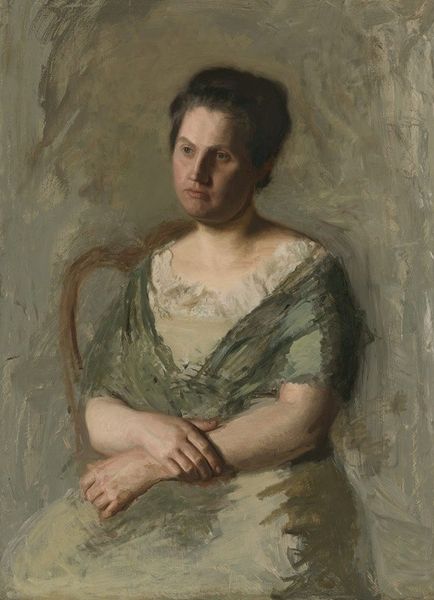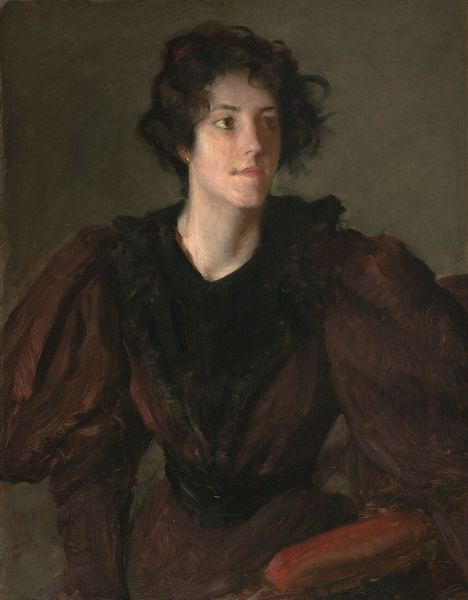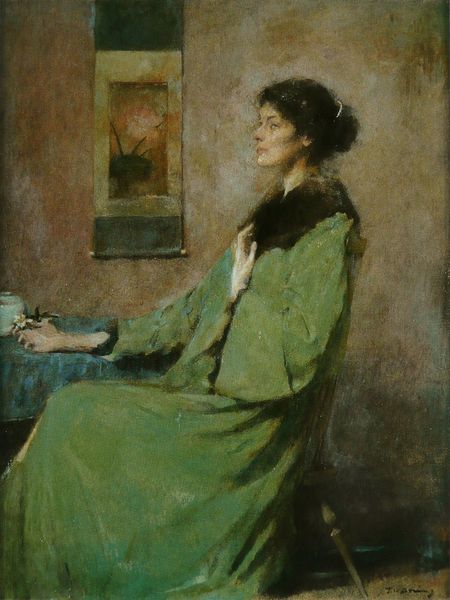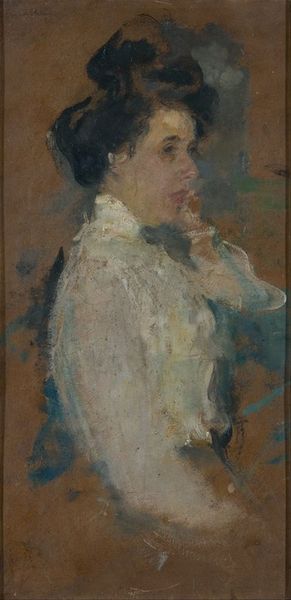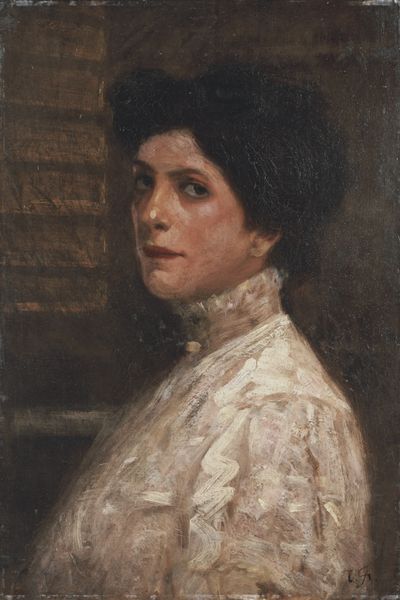
Copyright: Public Domain: Artvee
Curator: At first glance, Olga Boznanska's "Portrait of a French Lady-Writer Gabrielle Réval," painted in 1912, strikes me with its ethereal, almost melancholic mood. Editor: Yes, there's a certain quiet confidence there, wouldn't you say? Considering Réval was an outspoken figure in her time, that confident self-fashioning might very well have been the very point of this representation. Curator: Indeed. Let’s remember the societal position of women writers in the early 20th century. Boznanska, a Polish artist painting a French writer, adds another layer to this intersectional story. We're looking at representations *of* women *by* women in the public sphere. How were female intellectuals perceived, and how did they choose to portray themselves? Editor: An important question! Réval made a name for herself, writing fiction and criticism with socialist underpinnings. We're talking about a woman actively intervening in contemporary debates about gender and class, very visibly performing her own intellect for a public readership. Now, Boznanska also paints her with soft brushstrokes and a muted palette. It isn’t the formal academic style of, say, a Sargent commission. Why? Curator: It could signal a deliberate rejection of that patriarchal artistic tradition, instead offering a gentler, perhaps more sympathetic portrayal of female intellectual labor. Look at how the light catches the shimmering details of her dress – she’s present and powerful, yet softened. Editor: Absolutely, but consider the institutions that exhibited and validated her work. Was the painting meant to perform a challenging aesthetic and intellectual agenda within those very specific, highly political art markets? It’s important to acknowledge the implicit tension between being critically conscious, being a commercial artwork, and how those intersect. Curator: Exactly! It brings up an important paradox: Réval’s position was itself mediated through publishing houses and critical institutions, and so the painting perhaps speaks to those frameworks, acknowledging the negotiation between personal agency and institutional validation in women’s public lives. The slightly loose, impressionistic technique feels subtly subversive, reflecting her intellectual activity, but perhaps only subtly pushing against expectation, to avoid alienating more conservative critics and collectors. Editor: This is how images come to participate in shaping politics, in turn. Art doesn’t just reflect society. It *shapes* it, whether by affirming social hierarchies, challenging them, or something more subtle and complex in between. Curator: Boznanska's work gives us a nuanced perspective on the role of women intellectuals in early 20th-century Europe and their complex dance with visibility and self-representation. Editor: Yes, a conversation starter, compelling on multiple levels.
Comments
No comments
Be the first to comment and join the conversation on the ultimate creative platform.
